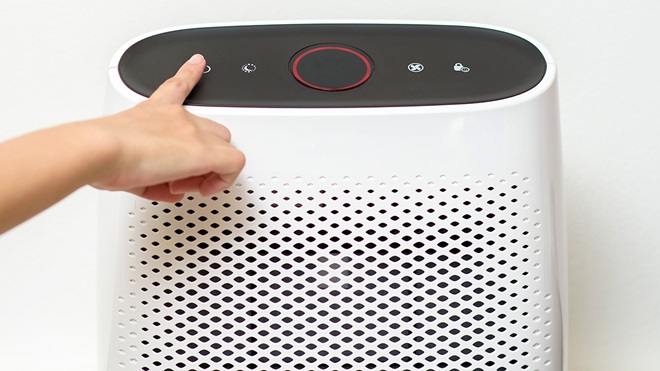Need to know
- Using an air purifier is just one of several measures to take in managing your asthma
- A HEPA filter is the most important thing to look for in an air purifier – it can filter out 99.97% of dust, smoke and other asthma triggers
- Steer clear of air purifiers that generate ozone, a known irritant for your airways
Here at CHOICE, we put air purifiers through some serious scientific testing, sealing them in a room to measure how well they clean the air of dust, smoke and other irritants that can trigger asthma.
We've found the best ones can quickly clear significant amounts of dust and fine particles, while the worst don't make much difference at all, so it's worth doing your research before you decide to buy.
But do you really need an air purifier to manage your asthma? Find out what they can and can't do to help with asthma, what to look for and what else you should you know.
On this page:
- How does an air purifier work?
- Do you need an air purifier?
- What should you look for in an air purifier?
- What ongoing cleaning and maintenance is involved?
- What other steps can you take to manage asthma?
How does an air purifier work?
An air purifier is basically a fan with filters inside. The air in a room is sucked into the purifier and passes through filters that trap any floating particles, 'cleaning' it.
Air purifiers remove some common household allergens from the air that may trigger asthma, like dust, pollen and mould, and reducing exposure to these allergens may improve your asthma control and make symptoms easier to manage.
An air purifier can also clear the air inside your home of bushfire smoke, another trigger for asthma. This could be worth considering if you're vulnerable to smoke from seasonal fires, for example if you live in a bushfire risk zone, or area commonly managed for hazard reduction burns.
Do you need an air purifier?
While it can help with airborne irritants, an air purifier is "no silver bullet" says Chris Barnes, our air purifier testing expert at CHOICE.
It will have no effect on dust on floors or furniture, so you'll still need to clean floors and soft furnishings regularly.
Think of an air purifier as one of several measures you can take in avoiding exposure to allergens or irritants and managing your asthma.
Anthony Flynn from Asthma Australia and CHOICE product tester Chris Barnes clear the air around air purifier technology.
What should you look for in an air purifier?
HEPA filter
A HEPA (high-efficiency particulate air) filter is the most important feature to look for in an air purifier.
It traps small particles that are invisible to the naked eye, such as dust, smoke, pollen, mould spores and other fine particles in the air.
There are different standards around the world, but generally to get a HEPA tick of approval, the filter must trap at least 99.95% (European standard) or 99.97% (US standard) of particles in the air that passes through the filter, down to a tiny 0.3 microns in size.
Other filters
Carbon or charcoal filters can filter out odours and volatile organic compounds like formaldehyde, which has been linked with asthma symptoms.
CHOICE tip: Some models rely on ozone technology, which generates ozone in the air. We strongly recommend that people with asthma avoid these – ozone is a known irritant and causes breathing irritation.
Dust and smoke removal
We recommend using our lab results to choose a model that rates high for removing both dust and smoke.
While we don't directly test for pollen, our experts say any model that performs well for removing dust will remove pollen too.
Size
When it comes to air purifiers, size matters. Look at the recommended room size on the air purifier and consider getting one rated for a slightly larger room.
That way it will still clear the air comfortably on its lowest (and quietest) fan speed when you're trying to sleep.
What ongoing cleaning and maintenance is involved?
You'll need to commit to regular cleaning of the pre-filter (a coarse filter to catch big particles so they don't clog the HEPA filter) and carbon filters. These can usually be washed, dried and reused.
The HEPA filter will also need to be replaced from time to time – the more you use your air purifier, the more often you may need to replace the filter, so factor in replacement costs for these. Read more about our tips for cleaning and maintaining your air purifier, as well as how much you can expect to pay for replacement filters.
What other steps can you take to manage asthma?
Asthma Australia, the peak body for people living with asthma, lists several steps to help manage your asthma, including:
- visiting your doctor for an asthma review every 6–12 months
- having an up-to-date asthma action plan, with clear instructions on what to do when you have asthma symptoms
- using your asthma preventer every day, to reduce the sensitivity of your airways.
We're on your side
For more than 60 years, we've been making a difference for Australian consumers. In that time, we've never taken ads or sponsorship.
Instead we're funded by members who value expert reviews and independent product testing.
With no self-interest behind our advice, you don't just buy smarter, you get the answers that you need.
You know without hesitation what's safe for you and your family.
And you'll never be alone when something goes wrong or a business treats you unfairly.
Learn more about CHOICE membership today
Stock images: Getty, unless otherwise stated.



